What is the Oresteia?

The Oresteia, a trilogy of Greek tragedies written by Aeschylus in the 5th century BCE, is a powerful exploration of justice, vengeance, intuition, and the transformation of both individuals and society. By viewing these ancient plays through the lens of Jungian archetypes and depth psychology, we can uncover profound insights into the human psyche and the evolution of civilization that remain deeply relevant in today’s world.
The trilogy tells the story of the cursed House of Atreus, beginning with King Agamemnon’s return from the Trojan War and his murder at the hands of his wife Clytemnestra and her lover Aegisthus. It continues with their son Orestes’ revenge against his mother, and culminates in Orestes’ trial before the gods and the founding of a new system of justice in Athens.
What Happens in the Oresteia?
The Oresteia, the only surviving tragic trilogy from ancient Greece, is a monumental work that explores themes of justice, revenge, fate, and the evolution of civilized society. Written by Aeschylus in the 5th century BCE, this trilogy consists of three plays: Agamemnon, The Libation Bearers, and The Eumenides. By viewing these plays through the lens of Jungian archetypes and depth psychology, we can uncover profound insights into the human psyche that remain deeply relevant in today’s world.
I. Agamemnon
Summary of the Agamemnon
“Agamemnon” is the first play of the Oresteia trilogy. It tells the story of the homecoming of King Agamemnon from the Trojan War and his murder by his wife Clytemnestra and her lover Aegisthus.
The play begins with a Watchman on the roof of the palace, awaiting the beacon that will signal Troy’s fall. When the beacon appears, the Chorus of Argive Elders enters, expressing their hope for Agamemnon’s return and recounting the ominous events leading up to the war, including Agamemnon’s sacrifice of his daughter Iphigenia to appease the goddess Artemis.
Clytemnestra enters, expressing her joy at her husband’s return. However, it soon becomes clear that her joy is feigned and that she harbors a deep resentment towards Agamemnon for sacrificing their daughter.
Agamemnon arrives, accompanied by the Trojan princess Cassandra as his war prize. Clytemnestra convinces him to walk on a purple carpet into the palace, an act of hubris that offends the gods.
Once inside, Cassandra, who is gifted with prophecy but cursed never to be believed, foresees her own death and that of Agamemnon. Her warnings go unheeded, and she enters the palace to meet her fate.
The play ends with Clytemnestra and Aegisthus emerging from the palace, having murdered Agamemnon and Cassandra. Clytemnestra defends her actions as justice for her daughter’s death, while the Chorus mourns the fall of their king and the curse upon the House of Atreus.
The Cursed House of Atreus
Agamemnon, the first play of the trilogy, sets the stage by depicting the return of King Agamemnon from the Trojan War and his subsequent murder at the hands of his wife Clytemnestra and her lover Aegisthus. This bloody act is rooted in the curse upon the House of Atreus, a cycle of intergenerational trauma and betrayal.
Archetypal Figures
Agamemnon:
The Shadow Father Agamemnon represents the archetype of the Shadow Father, embodying the dark aspects of patriarchal authority. His arrogance and hubris are evident in his sacrificing his daughter Iphigenia to appease the gods, waging the decade-long Trojan War, and flaunting his war-prizes, including the prophetess Cassandra. Agamemnon’s rule represents an outdated, autocratic order that is ripe for change.
Clytemnestra:
The Terrible Mother Clytemnestra is a complex manifestation of the Terrible Mother archetype. While she presents herself as a faithful wife, she harbors a deep resentment towards Agamemnon for sacrificing their daughter and bringing home a concubine. Her brazen murder of the king and seizure of power with Aegisthus inverts the patriarchal order in a way that cannot stand. She embodies the repressed rage and pain of the feminine that erupts destructively.
Cassandra:
The Unheeded Prophetess Cassandra, gifted with prophecy but cursed never to be believed, represents the archetype of the Unheeded Prophetess. She embodies the tragic consequences of unheeded intuitive wisdom. Despite accurately foretelling her own death and that of Agamemnon, her warnings go ignored, symbolizing society’s dismissal of the feminine and the intuitive.
The Fall of the House of Atreus
Agamemnon’s murder at the hands of Clytemnestra and Aegisthus is a shadow eruption reflecting the rottenness at the core of the House of Atreus. This act sets the stage for the subsequent plays, as their children Orestes and Electra must grapple with the family curse and the call to vengeance.
II. The Libation Bearers
Summary of The Libation Bearers
“The Libation Bearers” is the second play of the trilogy. It takes place several years after the events of “Agamemnon” and tells the story of Agamemnon’s children, Orestes and Electra, and their revenge against Clytemnestra and Aegisthus.
The play begins with Orestes returning to Argos from exile. He meets his sister Electra at their father’s grave, where she has come to pour libations. They plan their revenge against their mother and her lover.
Orestes, following the command of Apollo, disguises himself and enters the palace. Clytemnestra, unaware of his identity, receives him hospitably. Orestes then reveals himself and, with Electra’s help, kills Aegisthus.
Clytemnestra pleads for her life, even baring the breast that nursed Orestes. However, urged on by Electra and remembering Apollo’s command, Orestes kills his mother.
After the matricide, Orestes is haunted by the Furies, ancient goddesses who punish those who shed kindred blood. Driven to the brink of madness, he flees Argos to seek purification and the protection of Apollo, setting the stage for the final play of the trilogy.
Archetypal Figures in The Libation Bearers
Orestes:
The Hero’s Shadow Orestes, driven by the duty to avenge his father’s murder, represents the archetype of the Hero. However, he is a Hero with a Shadow, marked by his family’s curse and the moral taint of matricide. His struggle to fulfill his duty while grappling with the ethical and psychological ramifications represents the Hero’s journey towards individuation.
Electra:
The Animus Electra, Orestes’ sister, embodies the Animus archetype in her relentless push for Orestes to avenge their father. She represents the masculine principle of action and justice within the feminine psyche. Her single-minded focus on revenge reflects a psyche out of balance, dominated by the Animus.
The Weight of Matricide
Orestes’ killing of Clytemnestra, while ostensibly justified as vengeance for his father’s murder, carries the taboo weight of matricide. This act will haunt Orestes in the form of the Furies, the ancient goddesses of vengeance, setting the stage for his journey towards atonement and the evolution of justice in the final play.
III. The Eumenides
Summary of the Eumenides
“The Eumenides” is the final play of the Oresteia trilogy. It tells the story of Orestes’ pursuit by the Furies and his ultimate trial in Athens.
The play begins with Orestes seeking refuge in Apollo’s temple. The Furies, ancient goddesses of vengeance, hound him for his matricide. Apollo commands Orestes to go to Athens to seek the protection of Athena.
In Athens, Athena convenes a jury of Athenian citizens to decide Orestes’ fate. This trial, held on the Areopagus hill, is the first instance of a homicide trial in Athens.
The trial becomes a debate between the ancient, chthonic deities (the Furies) and the younger Olympian gods (Apollo and Athena). The Furies argue that Orestes’ crime of matricide is unforgivable, while Apollo argues that Orestes was justified in avenging his father’s murder.
Athena casts the deciding vote, acquitting Orestes on the basis that he acted on Apollo’s command. This establishes a new rule of law, where cases are decided by reason and evidence rather than by the old blood law.
The Furies, initially outraged by the verdict, are persuaded by Athena to accept a new role as protectors of justice and fertility in Athens. They are renamed the Eumenides, the “Kindly Ones,” signifying the integration of the old chthonic powers into the new Olympian order.
The trilogy thus ends with the resolution of the curse on the House of Atreus and the establishment of a new system of justice in Athens. It reflects the transition from a old order based on blood vengeance to a new democratic system based on reason and law.
Archetypal Figures
The Furies:
The Shadow The Furies represent the archetype of the Shadow, the dark, primitive aspects of the psyche that pursue us for our transgressions. They embody the old form of justice based on primal vengeance and the unforgiving blood-curse. Their relentless pursuit of Orestes represents the psychological torment of a guilty conscience and the need for the psyche to integrate its shadow aspects.
Apollo:
The Wise Old Man Apollo, who encouraged Orestes to avenge his father, represents the Wise Old Man archetype. He embodies the rational, ordered principle that seeks to evolve justice beyond the endless cycle of blood vengeance. His advocacy for Orestes in the trial reflects the emergence of a new form of justice based on reason and higher law.
Athena:
The Great Mother Athena, the goddess of wisdom and justice who presides over Orestes’ trial, represents the Great Mother archetype in her role as impartial mediator and bringer of a new order. Through the establishment of the Areopagus court, Athena integrates the old and new forms of justice, balancing the claims of the Furies with the Olympian order.
C. The Areopagus Court: Integrating Opposites
The establishment of the Areopagus court in “The Eumenides” is a pivotal moment in the Oresteia trilogy, representing a significant shift in the way justice is conceptualized and administered. It marks the transition from the old system of blood vengeance, represented by the Furies, to a new system based on reason, law, and civic participation.
In depth psychology, the concept of individuation refers to the process of integrating the various aspects of the psyche, including the conscious and unconscious, to achieve a more balanced and whole self. The Areopagus court can be seen as a manifestation of this process on a societal level.
The old order, represented by the Furies, relied on a primal, instinctual form of justice. The Furies pursued Orestes relentlessly for his matricide, demanding blood for blood. This system was based on the belief that the shedding of kindred blood was an unforgivable offense that could only be cleansed through more bloodshed.
In contrast, the new order, championed by Athena and the Olympian gods, introduces a system of justice based on reason, debate, and the consideration of circumstance. Orestes’ trial in the Areopagus court is the first instance of a homicide trial in mythical Athens. It establishes the principle that an accused person has the right to a fair trial, where arguments can be presented and judged by a jury of citizens.
This shift reflects a movement from a purely instinctual and emotional response to wrongdoing, to a more measured and rational approach. It integrates the old chthonic forces, represented by the Furies, into a new system that acknowledges their importance but channels their power in a more constructive direction.
Crucially, the old order is not simply discarded or repressed. Instead, Athena persuades the Furies to accept a new role as the Eumenides, the “Kindly Ones,” who will be honored in Athens and ensure the city’s prosperity. This transformation reflects the depth psychological idea that the shadow aspects of the psyche (in this case, the vengeful impulses represented by the Furies) cannot be simply eliminated, but must be integrated in a way that serves the growth and health of the whole.
The Areopagus court thus represents a higher synthesis of the opposing forces of the old and new orders. It acknowledges the importance of the ancient laws and the primal forces they represent, while also making space for a new form of justice based on reason and civic participation.
This synthesis can be seen as a model for the individuation process on a societal scale. Just as an individual must integrate the various aspects of their psyche to achieve wholeness, a society must find ways to honor its past and its primal impulses while also evolving to meet the demands of a new era. The Areopagus court, and the transformation of the Furies into the Eumenides, represents this process of psychic and social evolution.
In this way, Aeschylus’ Oresteia not only reflects the political and social transformations of his time, but also offers a timeless model for the process of psychological and cultural evolution. The integration of opposites achieved through the Areopagus court stands as a powerful symbol of the potential for societies to evolve towards greater consciousness, balance, and justice.
IV. Psychological and Societal Implications A. Intergenerational Trauma and the Family Shadow
The Oresteia vividly depicts the devastating impact of intergenerational trauma and the family shadow. The curse upon the House of Atreus, with its cycle of betrayal, vengeance, and kin-killing, reflects the way unresolved shadow material can haunt a family system across generations. Orestes and Electra must grapple with this heavy ancestral shadow as they seek to break the cycle of trauma.
B. The Evolution of Justice
The trilogy traces a profound evolution in the concept and administration of justice, from the ancient blood-feud to the emergence of a rational, civil system based on law and trial. This reflects the psychological process of integrating the shadow and transcending cycles of compulsive vengeance. It also symbolizes the societal evolution from a tribal, clan-based form of justice to the beginnings of democracy and civil law.
C. Balancing the Masculine and Feminine
The Oresteia also explores the tension between masculine and feminine principles and the need for their balance and integration. The overthrow of Clytemnestra’s matriarchal usurpation and the establishment of the Areopagus reflect a correction to the dominance of either polarity. Athena’s role as mediator and the transformation of the Furies suggests a higher synthesis that honors both masculine and feminine, reason and instinct.
D. Reason and Instinct
The conflict and eventual integration of the Furies and the Olympian order reflect the psychic and cultural tension between instinct and reason. The old chthonic deities represent primal intuition and blood-justice, while Apollo and Athena embody the rational principle necessary for civilization’s progress. The Oresteia suggests that real evolution comes not from repressing the instinctive but consciously integrating it into a higher order.
E. Individuation and Wholeness
On an individual level, Orestes’ journey reflects the process of psychological individuation – the integration of the conscious and unconscious aspects of the psyche into a greater whole. His confrontation with the shadow (in the form of the Furies), and the eventual resolution through a higher mediation, mirrors the path to psychic wholeness. The Oresteia suggests that true resolution of trauma and guilt lies in facing and integrating one’s shadow through a process of conscious atonement.
Who wrote the Oresteia?
Aeschylus (c. 525-456 BCE), the playwright of the Oresteia, lived during a time of great change and upheaval in Athens. As a soldier, he fought against the Persians in the Battle of Marathon and possibly at Salamis, experiences that deeply influenced his worldview and his writing.
Aeschylus’ Surviving Works
Of the estimated 70-90 plays Aeschylus wrote, only seven have survived complete:
- The Persians (472 BCE)
- Seven Against Thebes (467 BCE)
- The Suppliants (c. 463 BCE)
- The Oresteia trilogy (458 BCE)
- Agamemnon
- The Libation Bearers
- The Eumenides
- Prometheus Bound (date disputed)
Recurring Themes in Aeschylus’ Plays
Throughout his works, Aeschylus grapples with weighty themes that reflect the social, political, and philosophical ferment of his time:
Divine Justice and Human Responsibility:
Aeschylus’ plays often explore the tension between the power of the gods and the agency of humans. Characters must navigate the sometimes inscrutable will of the divine while bearing responsibility for their own choices.
The Polis and the Individual:
Many of Aeschylus’ plays, including the Oresteia, deal with the relationship between the individual and the city-state (polis). They often dramatize the tension between personal loyalties and duties to the broader community.
Cycle of Vengeance vs. Rule of Law:
A recurring theme in Aeschylus is the destructive cycle of vengeance and retribution, and the need to evolve beyond this to a system of justice based on law and reason. This theme is central to the Oresteia.
Hubris and Downfall:
Many of Aeschylus’ characters suffer downfall as a result of hubris, the arrogant overstepping of human boundaries. This theme is often intertwined with the characters’ relationship to the gods.
War and Its Consequences:
Having fought in the Persian Wars, Aeschylus often grapples with the realities and aftermath of war in his plays. The Oresteia, for example, deals with the homecoming of Agamemnon from the Trojan War and its tragic consequences.
Guilt and Atonement:
Aeschylus’ characters often struggle with the weight of guilt and the need for atonement or purification. This theme is prominent in the Oresteia, particularly in Orestes’ confrontation with the Furies.
Change and Continuity:
Aeschylus’ plays often depict moments of profound change and upheaval, whether in the divine order (Prometheus Bound) or in human society (the Oresteia). Yet they also emphasize the need for continuity and the integration of old and new.
The Oresteia in the Context of Aeschylus’ Work
The Oresteia represents the culmination of many of Aeschylus’ recurring themes and preoccupations. It grapples with questions of divine justice, human responsibility, the destructive cycle of vengeance, the relationship between the individual and the community, and the difficult process of social and ethical evolution.
Aeschylus’ own experience as a soldier likely influenced his emphasis on choosing a higher loyalty to the state over personal vendettas, as seen in Orestes’ submission to the judgement of the Areopagus. The establishment of this court also reflects Athens’ own democratic evolution and ambition during Aeschylus’ lifetime.
The trilogy’s movement from the blood-soaked tragedy of the House of Atreus to the establishment of a new legal and ethical order reflects Aeschylus’ preoccupation with humanity’s struggle to evolve beyond primal cycles of vengeance. Yet the integration of the Furies into the new order as the Eumenides also reflects his emphasis on continuity and the need to honor the old gods while progressing to a new stage of civilization.
In wrestling with these weighty themes through the medium of myth and archetype, Aeschylus not only encapsulated the tensions and aspirations of his own time, but illuminated timeless truths about the human condition. The Oresteia stands as a monumental achievement in Aeschylus’ oeuvre, a work that epitomizes his enduring insight into the struggle for justice and humanity’s striving for a higher order.
Agamemnon, the Great Father archetype, represents the old values and way of life – a once-great but now deteriorating force, plagued by arrogance and bound to cycles of violence. His hubris is evident in his sacrificing his daughter Iphigenia, waging the 10-year Trojan War, and flaunting his war-prizes. His rule embodies an outdated, autocratic patriarchy that is ripe for change.
Clytemnestra is a complex manifestation of the Great Mother archetype. She represents both the caring and the terrible aspects of the Mother, nurturing her children but brutally murdering her husband. Her brazen power grab and reign with Aegisthus inverts the patriarchal order in a way that cannot stand. She brings to light the shadow side of the family and society that has been repressed.
The siblings Electra and Orestes unite as the Anima and Hero archetypes to avenge their father and restore order. Electra pushes Orestes to act, while Orestes struggles with the moral dilemma and weight of his duty. Although ostensibly the Hero, Orestes also carries his family’s intergenerational trauma and the mark of his mother’s murder. He cannot complete his individuation while hounded by the Furies.
The Furies represent the ancient, primal forces of justice and vengeance, akin to the Shadow archetype. As much as they hound Orestes, they are repressed truths demanding their due. They are the old way that must be reckoned with and integrated, not just repressed, in forging a new order.
That new order arrives through the figures of Apollo and Athena, the Wise Old Man and Woman. They guide Orestes through his trial and transformation. Athena establishes the Areopagus court to fairly adjudicate Orestes’ case, shifting from personal blood-vengeance to a system of civil justice through evidence, argument and jury. This integration of opposing forces leads to a rebirth of society.
The Oresteia depicts change and renewal on both an individual and societal scale. Orestes must synthesize the opposing forces within himself to achieve psychological wholeness. Through his journey, Aeschylus suggests that true progress comes not from rejecting the past, but integrating intuition and primal energies with rational deliberation and collective decision-making. Similarly, Athens must incorporate old ideals of clan-based justice into a new democratic order balancing reason and vengeance to achieve harmony.
Ultimately, the Oresteia has endured for nearly 2500 years because it reflects archetypal human experiences of family trauma, moral conflict, the thirst for vengeance, and the difficult process of civilizational progress. By viewing these plays through a depth psychological lens, we recognize their continued relevance in highlighting the personal and societal shadow material we still grapple with today on the arduous path to justice and wholeness.
Read Abut Other Classical Greek Plays and Their Influence on Depth Psychology
Iphigenia in Aulis
Greek Tragedies Influence on Jung
Bibliography:
Aeschylus. The Oresteia. Translated by Robert Fagles. Penguin Classics, 1984.
Burkert, Walter. Greek Religion. Translated by John Raffan. Harvard University Press, 1985.
Dodds, E.R. The Greeks and the Irrational. University of California Press, 1951.
Fagles, Robert. “Introduction.” The Oresteia, by Aeschylus. Penguin Classics, 1984, pp. vii-xxxv.
Graves, Robert. The Greek Myths. Penguin Books, 1960.
Grene, David and Richmond Lattimore, eds. The Complete Greek Tragedies, Volume I: Aeschylus. University of Chicago Press, 1959.
Hillman, James. A Terrible Love of War. Penguin Press, 2004.
Jung, C.G. The Archetypes and the Collective Unconscious. Translated by R.F.C. Hull. Princeton University Press, 1969.
Goldhill, Simon. Aeschylus: The Oresteia. Cambridge University Press, 1992.
Knox, Bernard. Word and Action: Essays on the Ancient Theater. The Johns Hopkins University Press, 1979.
Meier, Christian. The Political Art of Greek Tragedy. Translated by Andrew Webber. The Johns Hopkins University Press, 1993.
Neumann, Erich. The Origins and History of Consciousness. Translated by R.F.C. Hull. Princeton University Press, 1970.
Nietzsche, Friedrich. The Birth of Tragedy. Translated by Douglas Smith. Oxford University Press, 2000.
Perera, Sylvia Brinton. The Scapegoat Complex: Toward a Mythology of Shadow and Guilt. Inner City Books, 1986.
Rabinowitz, Nancy Sorkin. Greek Tragedy. Blackwell Publishing, 2008.
Sommerstein, Alan H., ed. Aeschylean Tragedy. Duckworth, 2010.
Vernant, Jean-Pierre and Pierre Vidal-Naquet. Myth and Tragedy in Ancient Greece. Translated by Janet Lloyd. Zone Books, 1988.
Zeitlin, Froma I. “The Dynamics of Misogyny: Myth and Mythmaking in Aeschylus’s Oresteia.” Playing the Other: Gender and Society in Classical Greek Literature. University of Chicago Press, 1996, pp. 87-119.






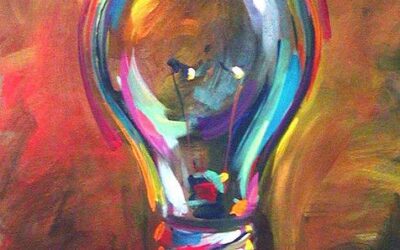





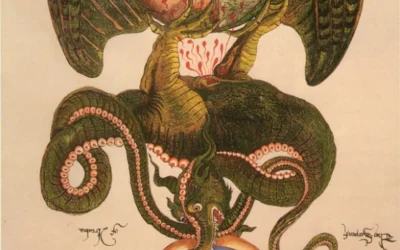



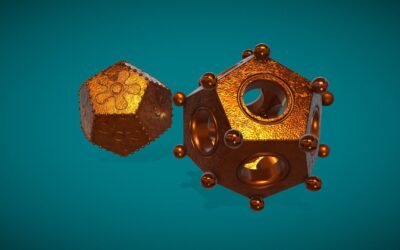

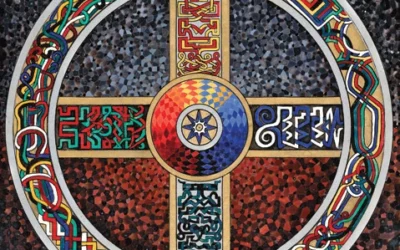
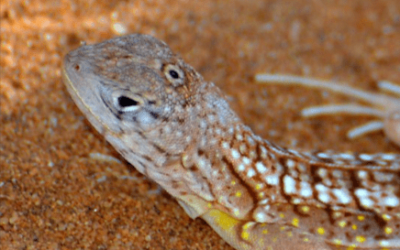
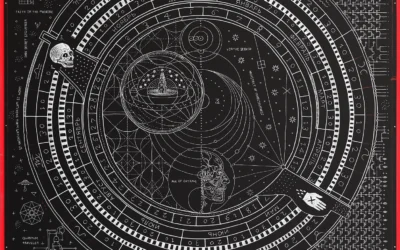
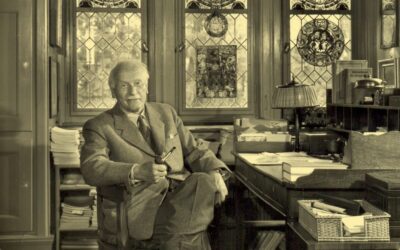
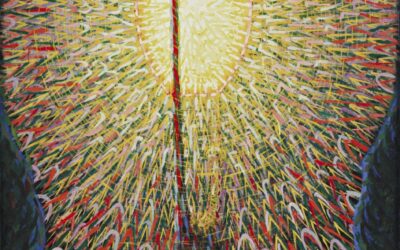
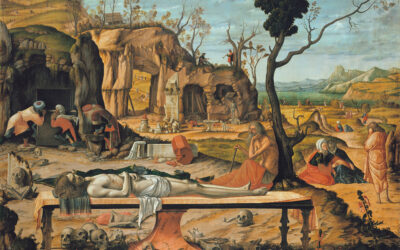
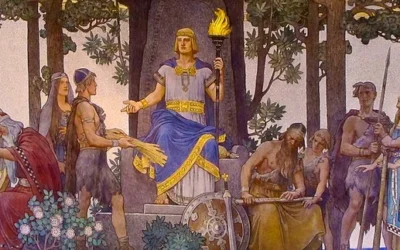
0 Comments